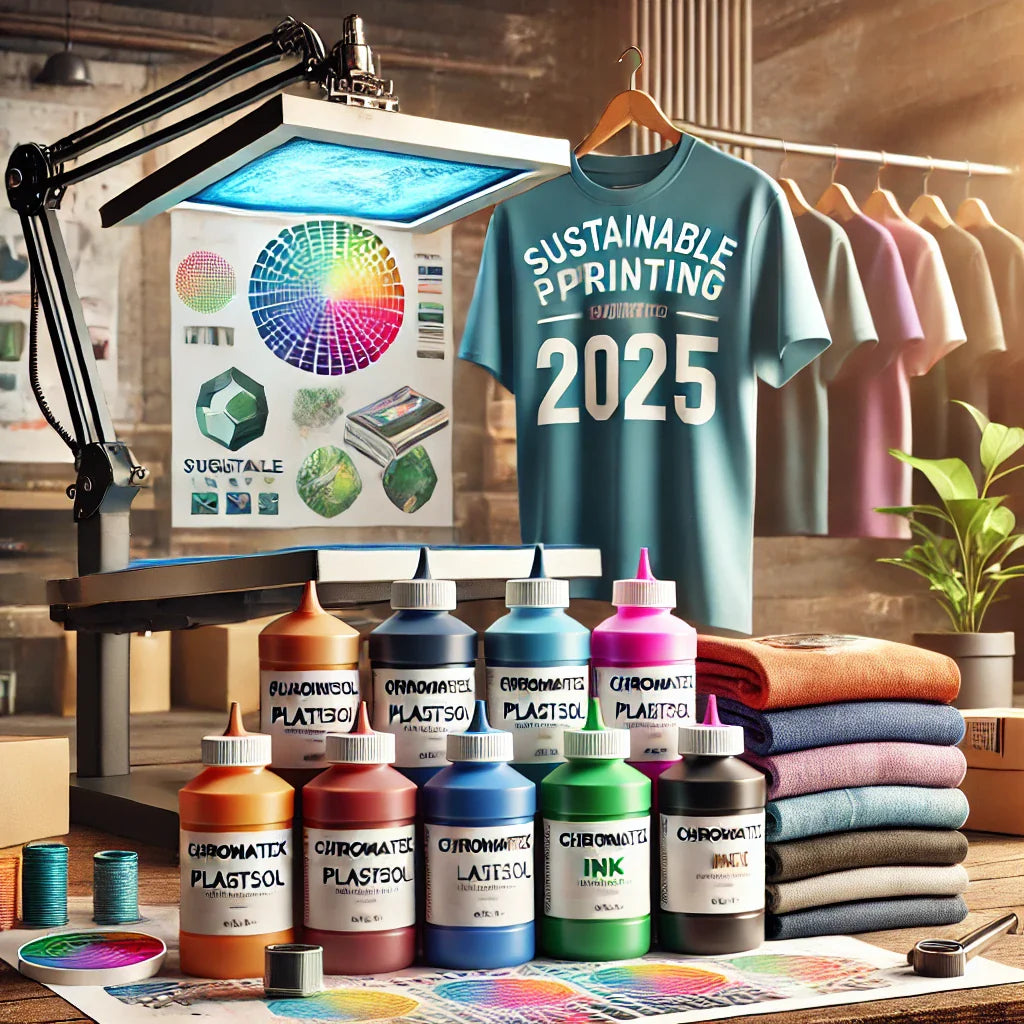
Top Screen Printing & Embroidery Trends to Watch in 2025: Canada & Global Outlook
Share
As we approach 2025, the screen printing and embroidery industry is entering a transformative period. Both the Canadian and global markets are seeing shifts influenced by technological advancements, sustainability priorities, and evolving consumer demands. Here’s a closer look at the trends expected to shape the industry in the coming year.
1. Technological Advancements and Digital Integration
Technology continues to drive change, merging traditional printing techniques with digital innovation. Direct-to-film (DTF) and sublimation printing, for example, are quickly becoming popular. These techniques allow for more flexibility in design, enabling detailed prints with vibrant colors. This hybrid approach is especially appealing as it meets the rising demand for intricate, custom designs without sacrificing quality.
2. Sustainability with High-Quality Plastisol Inks
In recent years, sustainability has become a priority for many consumers, and screen printers are increasingly adopting eco-conscious practices without sacrificing quality. While water-based inks are often promoted for their environmental benefits, plastisol inks can also be a sustainable choice when using high-quality formulations like the Canadian-made Chromatex line. Plastisol inks are long-lasting, durable, and versatile, reducing the need for frequent reprints and product replacements. Chromatex plastisol inks, specifically made in Canada, are phthalate-free and designed for vibrant color payoff and reliable opacity, especially on darker fabrics. This choice is particularly valuable to Canadian businesses, supporting local manufacturing while maintaining strict environmental standards.
3. Growth in Custom and Personalized Apparel
Personalization is a key driver in the custom apparel industry. The global custom printing market, valued at USD 31.69 billion in 2022, is projected to grow at over 10% annually until 2030. This growth is fueled by a desire for unique, individualistic styles. As consumers seek clothing that reflects their personalities, brands are responding with options for custom designs, colors, and styles. In Canada, this trend is especially relevant for businesses catering to local teams, events, and businesses looking to stand out.
4. Economic Factors and Market Dynamics
Economic trends play a significant role in the screen printing and embroidery industry. While the industry has experienced a slight decline in some areas due to economic pressures and competition, the demand for quality and customization remains strong. High competition, especially in the U.S. and Canada, continues to challenge businesses to differentiate themselves. With low barriers to entry, many businesses are exploring innovative solutions to stand out in a crowded market, emphasizing quality and unique product offerings.
5. Emphasis on Artisanal and Textured Designs
Consumers are showing a renewed appreciation for artisanal craftsmanship, with textured and layered embroidery becoming particularly popular. Techniques like fringe, moss stitching, and layered embroidery create a sense of depth and exclusivity, appealing to those who value a handmade touch. This trend toward artisanal fashion is expected to grow, especially among brands that position themselves as creators of high-quality, distinctive designs.
6. Challenges and Shortcomings in the Industry
While there are many opportunities, the industry also faces challenges, including the need for continuous technology upgrades and the pressure to adopt sustainable practices. Balancing these demands while maintaining affordability is crucial, particularly as economic conditions affect consumer spending on non-essential goods. Businesses that adapt quickly and efficiently to these changes are more likely to thrive in the evolving landscape.
7. Innovation in Embroidery Techniques and Materials
Embroidery is seeing an evolution towards more intricate, high-quality finishes as technology advances. Modern embroidery machines offer greater precision, enabling complex designs with layered textures, 3D effects, and mixed materials. Techniques such as moss stitching and applique are increasingly popular, adding depth and unique visual appeal to garments. Additionally, sustainable thread options, like recycled polyester and organic cotton, are gaining traction, aligning with the industry’s focus on eco-friendly practices. This shift toward innovative and sustainable embroidery methods caters to consumers who value both craftsmanship and environmental responsibility.
Conclusion
The screen printing and embroidery industry is on the brink of exciting changes in 2025. As Canadian and global markets shift towards digital integration, sustainable practices, and personalized designs, businesses have a unique opportunity to lead the way. By embracing these trends and adapting to the challenges, companies can not only meet consumer demand but also set new standards in quality, customization, and environmental responsibility.
